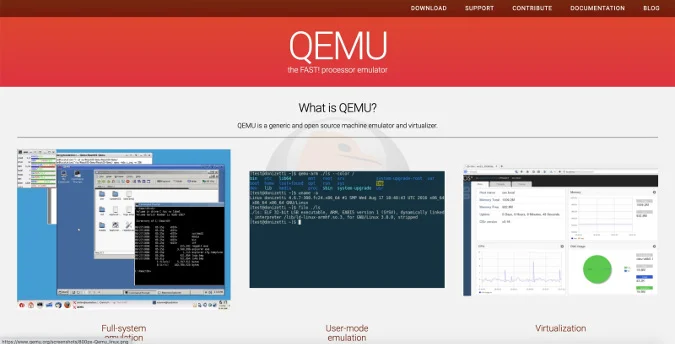

- Mac emulator for linux how to#
- Mac emulator for linux install#
- Mac emulator for linux android#
- Mac emulator for linux code#
- Mac emulator for linux simulator#
Setting up your development environment can be somewhat tedious if you're new to Android development. If you have already installed JDK on your system, make sure it is JDK 8 or newer.
Mac emulator for linux install#
Select "React Native CLI Quickstart" above for instructions on configuring a native build environment for React Native.īrew install -cask adoptopenjdk/openjdk/adoptopenjdk8 Copy If you're integrating React Native into an existing project, you'll want to skip Expo CLI and go directly to setting up the native build environment. You can check this document to find out what versions are supported. The Expo client app usually gains support for a given React Native version about a week after the React Native version is released as stable. If you do eject, the "React Native CLI Quickstart" instructions will be required to continue working on your project.Įxpo CLI configures your project to use the most recent React Native version that is supported by the Expo client app. In that case you'll need to " eject" eventually to create your own native builds. If you know that you'll eventually need to include your own native code, Expo is still a good way to get started.
Mac emulator for linux code#
Caveatsīecause you don't build any native code when using Expo to create a project, it's not possible to include custom native modules beyond the React Native APIs and components that are available in the Expo client app.
Mac emulator for linux simulator#
Once you've set these up, you can launch your app on an Android Virtual Device by running npm run android, or on the iOS Simulator by running npm run ios (macOS only).
Mac emulator for linux how to#
If you want to run your app on the iOS Simulator or an Android Virtual Device, please refer to the instructions for "React Native CLI Quickstart" to learn how to install Xcode or set up your Android development environment. Running your app on a simulator or virtual deviceĮxpo CLI allows you to run your React Native app on a physical device without setting up a development environment. If you're curious to learn more about React Native, check out the Introduction to React Native.

On iOS, use the built-in QR code scanner of the Camera app. On Android, use the Expo app to scan the QR code from your terminal to open your project. Install the Expo client app on your iOS or Android phone and connect to the same wireless network as your computer. This will start a development server for you. This will boot Fedora in a standard way.Expo init AwesomeProject cd AwesomeProject yarn start # you can also use: expo start Copy In the QEMU window, choose the first option, Start Fedora-Workstation. This will launch Fedora Workstation through QEMU. -drive file=… specifies the partition disk you want to use.-device usb-tablet indicates you are using a touchpad as the input device.-show-cursor ensures that you see a mouse cursor.-accel specifies the type of acceleration you want to use, which should be hvf for hardware-based acceleration.-cdrom specifies the file you will use to boot your workstation.

This is a modern, virtio-based display device designed for virtual machines and includes VGA-compatibility mode.


 0 kommentar(er)
0 kommentar(er)
